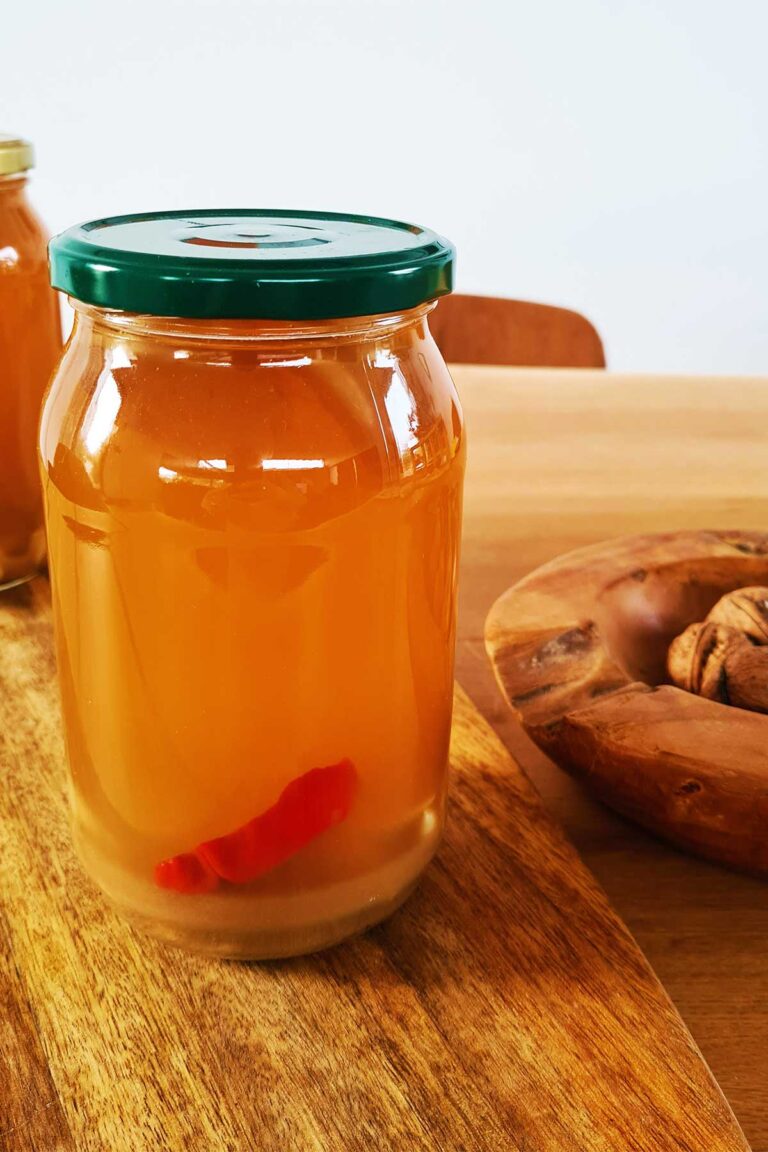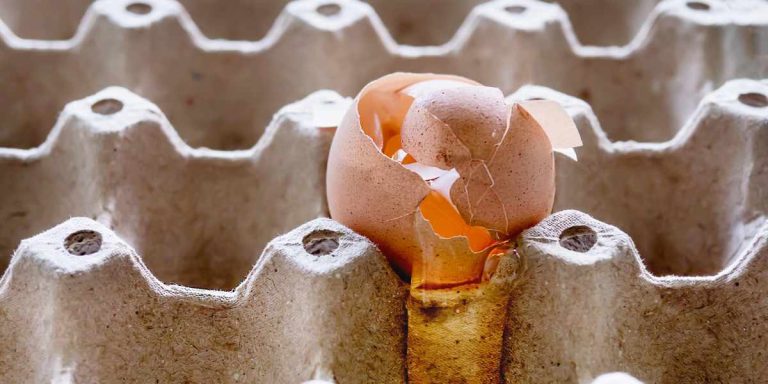The Low FODMAP Diet – Everything You Need to Know
Are you one of the people who suffer from irritable bowel syndrome (IBS)? Does it usually happen after consuming some specific foods? Digestive disorders can be linked to certain foods that contain small carbohydrates or FODMAPs, which are actually the cause for these problems. The right kind of diet plan – which is one that’s low in FODMAP – can change the life of those with gastrointestinal symptoms such as recurrent bloating, unpleasant cramps, gas, diarrhea or constipation.
Contents:
- What are FODMAPs?
- Who is a low FODMAP diet for?
- What is the idea behind it?
- What does the low FODMAP diet involve?
- FODMAP food list
- AVOID these high FODMAP foods
- Avoiding the pitfalls of low FODMAP diet
What are FODMAPs?
The acronym FODMAP actually means “fermentable oligosaccharides, disaccharides, monosaccharides and polyols”, which may seem like some complicated names, but they’re actually carbohydrates. These carbohydrates can be further divided into five different groups called fructans, galacto-oligosaccharides, lactose, excess fructose and polyols.
FODMAPs aren’t like any other carbohydrates – these specific ones can be found in a lot of foods and ingredients such as garlic, onions, mushrooms, apples, rye, lentils and even milk. These are just some examples. The problem with these items is that the sugar in them has a low rate of absorption and they end up being fermented by bacteria after reaching the small intestine and then entering the colon. After this, unpleasant gas is produced and it causes the bowel to stretch and cause further wind, pain and bloating. Another thing that could happen is water to move into the colon or out of it which will cause diarrhea, constipation or even a combination of both. People who suffer from IBS will encounter these symptoms more frequently than other individuals.
Take a more detailed look at the FODMAPs:
- Fermentable – items that will be fermented by bacteria when they reach the large bowel.
- Oligosaccharides – “oligo” means “few” and “saccharide” means sugar.
- Disaccharides – a double sugar molecule.
- Monosaccharides – a single sugar molecule.
- Polyols – certain sugar alcohols.
Do you need a low FODMAP meal plan? Check out this meal planner! >>>

Who is a low FODMAP diet for?
A low FODMAP implies that the person who adopts it has to follow a specific temporary eating pattern made of a very low amount of FODMAPs. A low FODMAP diet will help you fix your digestion problems, but it can also treat some other conditions such as:
- Irritable Bowel Syndrome (IBS).
- Some other forms of Functional Gastrointestinal Disorder (FGID).
- Small intestinal bacterial overgrowth (SIBO).
- A number of auto-immune diseases such as rheumatoid arthritis, multiple sclerosis or eczema.
- Fibromyalgia or other health issues that are caused by specific foods.
- Recurrent migraines that start right after eating certain dishes.
What is the idea behind it?
Keeping a low FODMAP diet isn’t a simple thing. Because this is such a restrictive type of diet that will make you exclude a lot of common food and even entire food groups from your menu, you might find it a little bit difficult following it. You must also be very careful to avoid the risks of malnutrition, which can lead to very bad effects on your health.
A low FODMAP diet is not the same thing as a no FODMAP diet – as the name says it, the second one eliminates all FODMAP foods from each one of your meals. The no FODMAP is certainly not recommended, so I advise you to follow a low FODMAP meal plan.
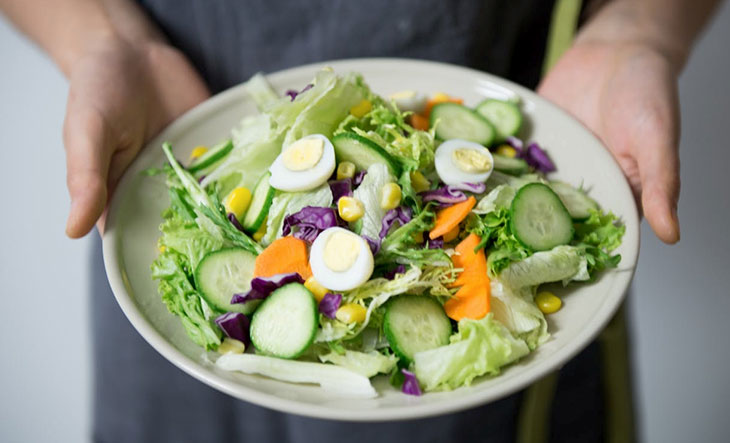
What does the low FODMAP diet involve?
I always advise people to consult a professional and experienced dietician before making the decision of starting a low FODMAP diet. Your chosen dietician should be aware of all the implications and stages of the FODMAP diet. Keep in mind that FODMAP intolerances are different from other conditions because of the simple fact that they can differ from one person to another. Therefore, every treatment can be different depending on the individual and you just can’t follow a standard universal formula. The only way to have an efficient low FODMAP diet plan is to have one created by a professional specifically for a person’s needs.
Take a look at the two stages:
Stage #1
The first stage of the low FODMAP diet will not allow you to eat any food that has FODMAP. This stage usually takes from 4 to 6 weeks and your dietician should create a list with foods (and alternatives) you are allowed to eat, so you’ll be sure you aren’t missing on any important nutrient. You should always keep track of any symptoms you may have during this timeframe and then tell them to your dietician at the end of this stage. This way, he/she will be able to successfully advise you about the second stage of this diet.
Stage #2
The 2nd stage will allow you to reintroduce some foods that were totally forbidden in the first stage. The diet will now be personalized to fit your own needs. On this specific stage, you will also find out what are the FODMAP foods that you can comfortably tolerate. You must understand which prebiotic effects of FODMAP foods you can enjoy and to make sure your diet isn’t too restrictive.
Your chosen dietician must guide you into finding out which foods you can bring back into your diet in order to minimize the bad symptoms and to make sure you have a good variety of meals. The result of this journey should be a personalized diet that doesn’t have as many FODMAP problems but it’s also not as restrictive as the first stage of the low FODMAP diet.
Try the low FODMAP meal plan, customized for your exact needs! Check it out! >>>
How can you stick to low FODMAP diet being a vegetarian?
If you have this issue, you may already be familiar with all the digestive symptoms that occur such as bloating, gas, abdominal pain, constipation or even diarrhea. All these symptoms are very unpleasant and they can affect your health level. If you’re a vegetarian, this diet can get a bit complicated and tedious mostly because beans (the main protein source for vegetarians) should be excluded if you want to keep a low FODMAP diet. The reason behind this is that beans aren’t digested well and they usually cause bad symptoms.
Even though you’ll have to exclude a lot of foods from your diet, you should always keep in mind to get enough good nutrients into your body and not have any deficiencies. If you’re a vegetarian you may already know you have to be extra careful about your protein, iron and calcium sources. I’ve made a list of some useful tips you should keep in mind:
- Eat lentils. I recommend stocking on canned lentils because these are lower in FODMAPs and by consuming them you make sure you will get your protein and iron intake. You can also use them in lots of recipes such as soups, veggie burgers or stews. It is usually advised to not consume more than half a cup of lentils and to totally avoid beans and chickpeas because they are high in FODMAPs.
- Find a low-FODMAP cereal you like. Keep in mind to find one that’s fortified with iron (3mg per serve).
- Consume dairy if you aren’t an egg-e-tarian. Dairy is packed with proteins and calcium and that’s why you should switch to it if you can. On the other hand, if you’re lactose intolerant you can easily find lots of lactose-free products. Your goal should be 3 servings every day, 1 serving meaning either 1 cup of milk, a small cup of yogurt or 2 slices of cheese.
- If you don’t want to eat dairy, try some plant-based milk instead. You can choose your favorite plant milk and consume it instead. Some of my favorites are oat milk, almond milk and even rice milk. Keep in mind to also check the label in order to make sure your plant-based milk is fortified with at least 150mg of calcium per 250ml. Even though most of these milks are low in protein, you can count on them for your calcium intake.
- Eat FODMAP nuts (pecans, walnuts, Brazil nuts or almonds) if you need some more protein into your daily meals and snacks. All these are also a very good source of healthy fats. Important advice: do not eliminate absolutely all fat content from your meals. Fat is an essential nutrient and if you will avoid it completely you might encounter a lack of energy.
- Replace snacks with chocolate and malt powder drinks. I advise taking them because they’re a precious source of iron and other nutrients. You can try mixing it with milk for some extra calcium intake.
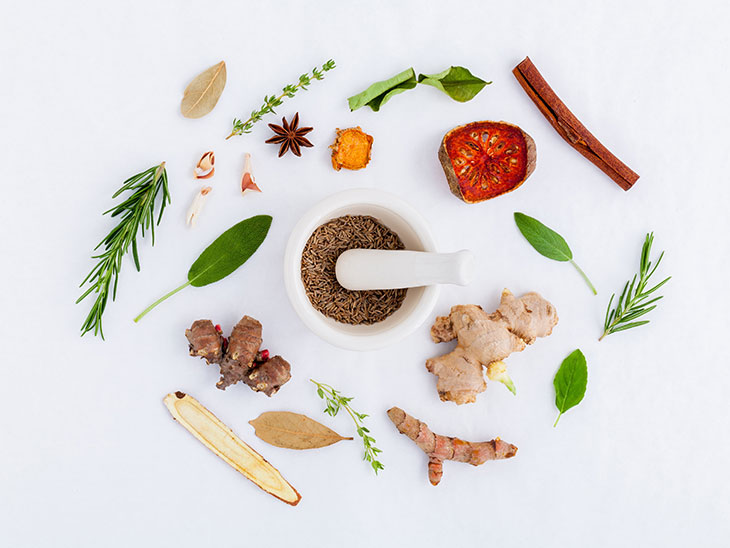
FODMAP food list
AVOID these high FODMAP foods
[x_accordion_item title=”Veggies and Legumes”]
- Garlic
- Onions
- Beans
- Beetroot
- Cauliflower
- Celery
- Sauerkraut
- Mushrooms
- Peas
- Pickled vegetables
- Savoy Cabbage
- Soy
[/x_accordion_item]
[x_accordion_item title=”Fruits”]
- Apples
- Apricots
- Avocado
- Blackberries
- Cherries
- Dates
- Figs
- Goji berries
- Grapefruit
- Mango
- Nectarines
- Peaches
- Pears
- Persimmon
- Plums
- Pomegranate
- Sea buckthorns
- Watermelon
[/x_accordion_item]
[x_accordion_item title=”Cereals, Pasta, Nuts “]
- Wheat containing products
- Almond meal
- Amaranth flour
- Barley
- Bran cereals
- Cashews
- Cous cous
- Granola
- Muesli
- Pistachios
- Rye
[/x_accordion_item]
[x_accordion_item title=”Condiments, Dips, Sweets, Sweeteners, and Spreads”]
- Agave
- Fructose
- High fructose corn syrup (HFCS)
- Hummus
- Honey
- Jam
- Pesto
- Relish
- Stock cubes
- Sugar-free sweets containing polyols
- Sweeteners (Inulin, Isomalt, Maltitol, Mannitol, Sorbitol, Xylitol)
- Tahini
[/x_accordion_item][x_accordion_item title=”Dairy”]
- Buttermilk
- Cream cheese
- Halloumi
- Ricotta
- Cream
- Ice cream
- Kefir
- Milk:
- Sour cream
- Yogurt
[/x_accordion_item]
Foods you can eat on a low FODMAP diet
You can eat these low FODMAP foods, but don’t forget to check the allowed quantities too! You can do that with the Monash app, here.
[x_accordion_item title=”Veggies & Legumes”]
- Bok choy / pak choi
- Broccoli
- Brussel sprouts
- Butternut squash
- Cabbage
- Carrots
- Celeriac
- Chickpeas
- Chives
- Collard greens
- Cucumber
- Eggplant
- Green beans
- Peppers
- Ginger
- Kale
- Lentils
- Lettuce:
- Olives
- Parsnip
- Potato
- Pumpkin
- Radishes
- Spinach, baby
- Squash
- Sweet potato
- Tomato
- Zucchini
[/x_accordion_item]
[x_accordion_item title=”Fruits”]
- Bananas
- Blueberries
- Cantaloupe
- Cranberry
- Clementine
- Grapes
- Kiwifruit
- Lemon
- Lime
- Mandarin
- Orange
- Papaya
- Pineapple
- Raspberry
- Rhubarb
- Strawberry
[/x_accordion_item]
[x_accordion_item title=”Meats”]
- Beef
- Chicken
- Lamb
- Pork
- Turkey
- Fish
- Canned tuna
- Seafood
[/x_accordion_item]
[x_accordion_item title=”Cereals, Pasta, Nuts “]
- Wheat free bread
- Gluten free bread
- Wheat free or gluten-free pasta
- Almonds
- Brazil nuts
- Bulgur
- Buckwheat
- Chestnuts
- Coconut
- Hazelnuts
- Macadamia nuts
- Millet
- Mixed nuts
- Oats
- Peanuts
- Pecans
- Pine nuts
- Polenta
- Popcorn
- Quinoa
- Rice
- Seeds
- Starches: maize, potato, and tapioca
- Sorghum
- Walnuts
[/x_accordion_item]
[x_accordion_item title=”Condiments, Dips, Sweets, Sweeteners, and Spreads”]
- Aspartame
- Capers
- Chocolate:
- Chutney
- Fish sauce
- Glucose
- Maple syrup
- Marmalade
- Marmite
- Mayonnaise
- Miso paste
- Mustard
- Oyster sauce
- Peanut butter
- Rice malt syrup
- Soy sauce
- Stevia
- Sugar
- Vinegars
- Wasabi
[/x_accordion_item][x_accordion_item title=”Dairy & Eggs”]
- Butter
- Cheese (Brie, Camembert, Cheddar, Cottage, Feta, Goat / Chevre, Mozzarella, Parmesan, Swiss)
- Eggs
- Vegan milks
- Tofu – drained and firm varieties
- Whipped cream
- Yoghurt, lactose-free
[/x_accordion_item]
This is just a part of the allowed and forbidden foods in the low FODMAP diet. Check out this list for more low FODMAP foods.
Avoiding the pitfalls of low FODMAP diet
In case you already started the low FODMAP diet or you are just thinking of trying it, you should be completely informed and avoid these very common mistakes and pitfalls:
Not seeking medical advice
As I already told you before, the low FODMAP isn’t a common diet and you should always consult a professional that will help you by offering the right indications. You shouldn’t just self-diagnose yourself with IBS, but talk to your doctor about your symptoms instead. He/she will help you with an accurate diagnosis and treatment. You may even be referred to a gastroenterologist for further consultation.
Once you are sure the IBS diagnostic is right, try and find an experienced registered FODMAP dietician you can talk to.
There are some specific cases in which this diet cannot be applied, though. For example: for individuals with eating disorders, for people who can’t have any control over their eating habits (because of other problems such as community situations) and even for people who are already following a low FODMAP diet based on instinct. All these reasons are just stronger arguments for which you should seek specialized advice from a professional. Making the decision of starting this drastic diet on your own could end up in serious health issues. Plus, you will need extra help and advice if you have other food intolerances, inflexible food preferences or a list of forbidden foods because of other reasons (including personal philosophies).
Don’t change everything at once
A lot of people make the mistake of changing everything at the same time. They start to radically switch their diet and supplements because they think a quick change will help them achieve a faster result. If you will do this, you will have no clue about the things that worked and the things that didn’t and you will also take some risks regarding your health.
I advise you to start the low FODMAP diet plan while keeping the rest of your habits and routine exactly the same. When you actually start experimenting with this diet, please talk to your dietician about your medications and ask him/her if this aspect will affect your health. Every little aspect is important, including the fact that you may take some antibiotics for another disease. It’s actually better to finish all your medication before starting a low FODMAP diet.
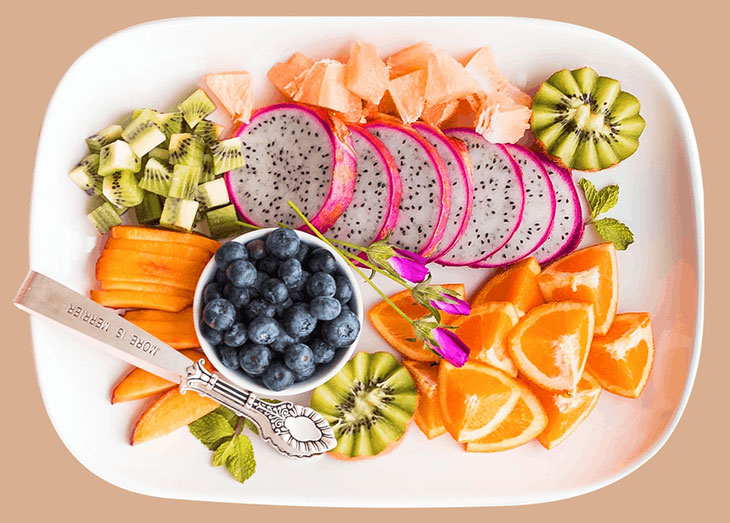
Insufficient fiber intake
As we mentioned before, your fiber levels will dramatically drop after starting the low FODMAP diet. This isn’t a good thing because fiber is one of the most important elements that help your body create the good bacteria located in our gut (the one that helps your body perform a lot of crucial functions, including gas production).
The natural solution would be to eat more foods that are both rich in fibers and allowed in the FODMAP diet: a wide variety of FODMAP fruits and veggies, different kinds of grains and legumes and even small portions of seeds and certain nuts. All these FODMAP fibers will be digested more slowly and so they’re less likely to affect your diet.
Don’t have unrealistic expectations
Please keep in mind that the low FODMAP diet can’t work magic overnight. It’s crucial that you don’t make unrealistic expectations for yourself and the things that are going to change after you start the diet. You should focus your attention on the specific ways in which your body reacts to this change and all the FODMAP foods instead. This will help you manage IBS better and even other gastrointestinal problems.
Over-limitation of the diet
The secret to an effective low FODMAP diet is to consume a wide variety of FODMAP foods (unless you have a strong reason not to). Oligosaccharides (certain fibers found in soy and wheat) should be avoided on a low FODMAP diet, while sourdough bread and tofu are actually permitted.
Want to give it a try? Get ready to receive your low FODMAP meal plan and shopping list right away! You will notice a significant change in your digestive processes – just be patient.
Featured image source: https://unsplash.com/photos/V4MBq8kue3U
Other photo sources:
Mariya Tyutina – https://www.pexels.com/photo/blur-cake-cherry-chocolate-241556/
Buenosia Carol – https://www.pexels.com/photo/appetizer-close-up-cucumber-cuisine-406152/
kerdkanno – https://pixabay.com/en/doctor-basil-natural-pharmaceutical-906140/
bijutoha – https://pixabay.com/en/dish-plate-meal-lunch-healthy-1883501/
If you make this, please leave a review and rating if you liked this recipe! ★★★★★


